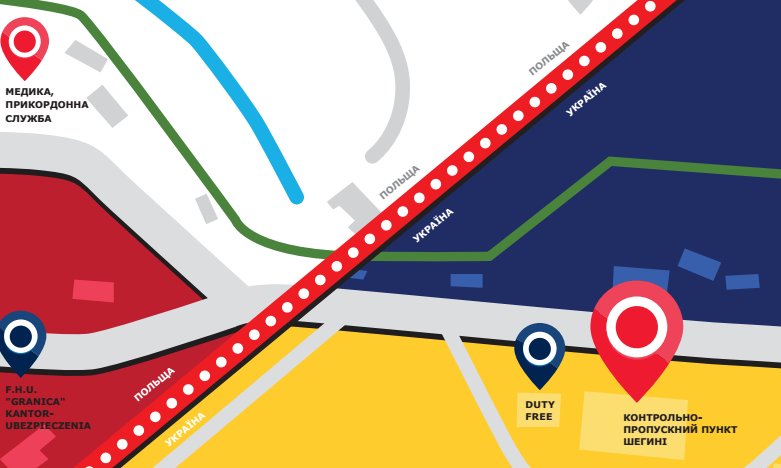This study aims to see a bigger and more comprehensive picture, the potential and problems of the Ukrainian-Polish border as the most crowded one on the eastern edge of the EU. Local communities are the key to this as the major users and beneficiaries. We explore how people see the Ukrainian-Polish border and how the border affects their everyday lives.
Here we focus on two of them. The Shehyni community is right next to the oldest and most crowded BCP for cars, lorries, buses, and individuals. While the Uhryniv community is small, and just a few hundred meters away from a brand new BCP with joint control.
In the first part of this research we look at the effects of the border on people’s lifestyles and view of the world. In the second part, we see the perception and realities of crossing the border via two BCPs. Constantly moving back and forth between Ukraine and Poland, local residents feel the impact of infrastructure on their lives. The last part is devoted to Ukrainian border management policy and relations with Poland, since decisions taken in central offices could not but have an effect on local communities.
Read “Living Near the Border” (PDF)
This study is inspired and supported by the Open Society Foundation’s Initiative for Safe and Humane Borders aimed at moving selected borders and borderlands from a state of violence, uncertainty, privation and marginalization towards greater safety, predictability, prosperity, and inclusion. Paper created within the framework of the Building Safe and Human Borders Through Public Assessment of the Polish-Ukrainian Border project implemented in cooperation with the Stefan Batory Foundation (Poland) and funded by the International Renaissance Foundation. The material reflects the position of the authors and does not necessarily coincide with the position of the International Renaissance Foundation.

